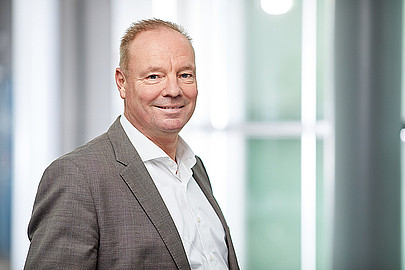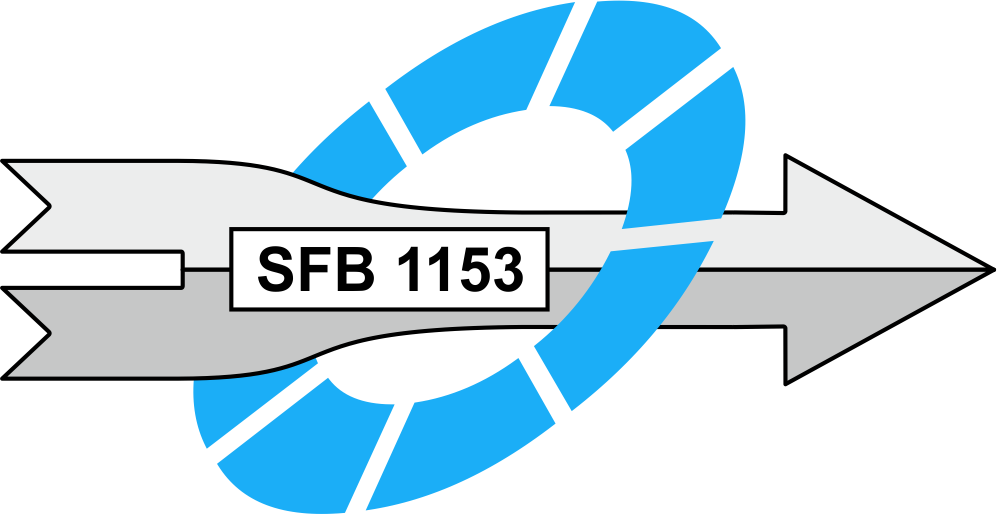Motivation and objectives
Subproject B03 aims to influence the geometric and microstructural formation of the joining zone. Different approaches are used, such as increasing the strain caused by forming, amplified temperature gradients during the forming process as well as enhanced bond strength through friction welding.
Since the temperature gradient of dissimilar hybrid semi-finished products is required to optimise joining zones, the heating strategy for steel-aluminium hybrid semi-finished products is to be further developed.
The main challenge posed by the material combination is the different flow behaviour of the respective materials at the same temperature. In addition, the hot forming temperature of steel is higher than the melting temperature of aluminium. In order to achieve a favourable flow behaviour an abrupt step-like temperature curve is required in the area of the joining zone of the hybrid semi-finished product. The temperature curve is to be adjusted by change of process parameters, such as induction and local cooling of aluminium during heating.
Geometrically variable joining surfaces are investigated, deviating from the conventional flat surface welding of the semi-finished products. Here the focus is to increase material contact to improve the bond strength of hybrid components. Thus, potentials of combined form and material fit are used.
Results
Within the first research period, extrusion of serially arranged hybrid semi-finished products made from the combinations steel-steel and steel-aluminium was investigated. Therefore, process parameters for friction welding of the material combinations were adjusted to achieve ideal bonding of the welded semi-finished products.
To maintain the bonding after extrusion, a tool setup with a counter force superposition were developed for steel-aluminium hybrid semi-finishes. Due to a tendency of material separation, the tool setup helped avoiding material separation in steel-aluminium semi-finished products and increasing the compound strength.
The different flow behaviour of the respective materials at the same temperature was another research focus. The aim of setting a maximum temperature gradient was pursued by means of adapted heating strategies.
Current work and outlook
The scientific goal of the current funding period is the optimization of the compound properties of hybrid components and the increasing of their geometrical complexity. Subproject B03 is concerned with the extrusion of friction-welded hybrid semi-finished products made of steel-aluminium, steel-nickel-based alloy and steel-steel. In friction welding, different surface geometries are used to obtain force and form fit in addition to material fit.
To increase deformation stress, a hollow shaft is used as a demonstrator, manufactured by means of various extrusion processes such as backward can extrusion, forward tube extrusion and combined forward rod and backward can extrusion. Thus, different load profiles are introduced into the joining zone. The combination of local cooling of low-melting aluminium with simultaneous inductive heating of steel is a targeted approach for improving billet heating.
Finally, mechanical tests and metallographic investigations are carried out.
Publications
Subproject leader


30823 Garbsen


30823 Garbsen
Staff




30823 Garbsen


